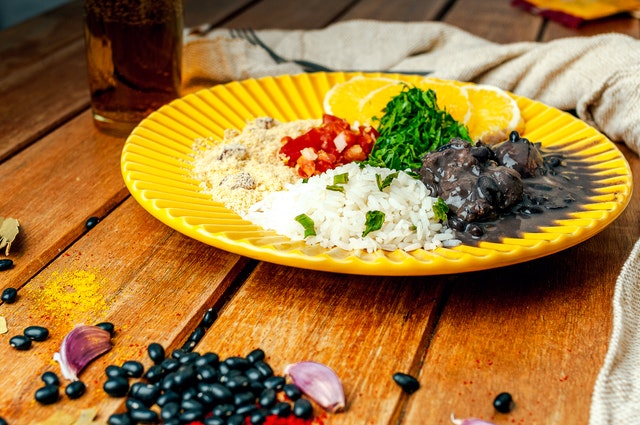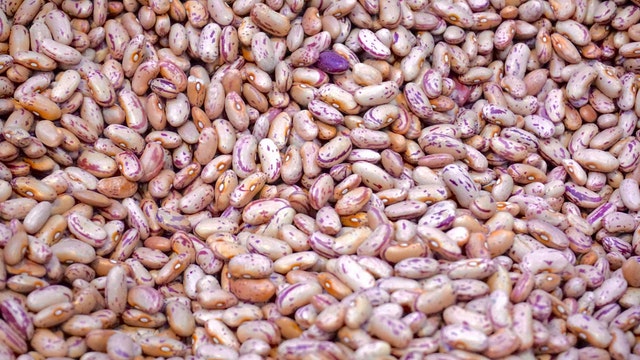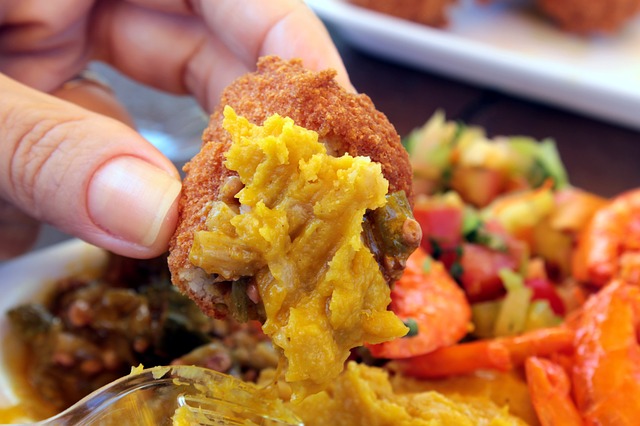Life beyond rice and beans Posted by carol on May 17, 2021 in Brazilian Profile, Culture, Customs, Economy, Vocabulary
[A vida além do arroz e feijão] Olá, prezados leitores! I hope you’re com fome (hungry)! Our text today will go over a key ingredient in culinária brasileira (Brazilian cuisine), beans. A household staple across the country, this vegetable is not only part of our culture, but also of the economy. Just so have an idea of its relevance, in addition to Brazil being o maior produtor (the biggest producer) in the world, the beans consumo (consumption) in Brazil reaches over 3 million tons per year!! However, besides its famous arroz (rice) pairing, this vegetable stands out in several other pratos (dishes) de norte ao sul (from north to south). Estão prontos?
FEIJOADA
This is probably o mais conhecido (the best known) Brazilian bean-based dish and you can find out more about it here and here. Made with um caldo espesso de feijão preto (a thick black beans broth), the feijoada is enriched with linguiças (sausages) and various types of cortes suínos (pork cuts). Other than the vegetarian spin, where a carne (the meat) is replaced by vegetables and even pieces of coconut for that extra crunchiness, feijoada can be found in its “gorda” (“fatty”) version (with pork feet, ears and belly) and the “magra” (“lean”) version. Common acompanhamentos (sides dishes) are white rice, farofa, couve (kale) and fatias de laranja (orange wedges).
FEIJÃO TROPEIRO
The feijão roxo (kidney bean) variety is cooked al dente for this much beloved receita (recipe). This dish was created by desbravadores (trailblazers) who would spend countless weeks and months roaming the Brazilian matas (forests), so the ingredients used are either secos (dried), cured or defumados (smoked), such as sausages and meat. Farinha de mandioca (cassava flour), ovos mexidos (scrambled eggs) and kale are added to this mixture, along with a handful of torresmo (pork crackling) to crown this dish. Learn how to make your own here!
ARRUMADINHO
Most typically found in nordeste (northeastern) Brazil, the name of this dish – literally translated as “neatly arranged” – comes from the way in which the ingredients are organized on the prato (plate), placed lado a lado (side by side) so that the person can combine them ao comer (when eating). The feijão verde (black-eyed peas) are sautéed with cebola e alho (onions and garlic), and then dried meat in manteiga de garrafa (like ghee butter), farofa and a vinaigrette salsa to bring some acidity to the dish.
TUTU À MINEIRA
Also known simply as tutu, this dish is a variation of the use of beans as a side dish. The beans are batidos (blended) until they turn into a thick broth, to which cassava flour is added so that it gets very dense and consistent. It should not be too liquid or too firm, but cremoso (creamy) and rich. Bacon can be used for extra sabor (flavor), but the rule is always to have slices of ovos cozidos (hard-boiled eggs) on top and plenty of cebolinha (chives) to garnish.
CALDO DE FEIJÃO
Unlike tutu à mineira, this beans soup must be liquid and very rich in meats such as bacon, sausage and beef and pork cuts. It is a favorite for dias de inverno (winter days) in Brazil, because nos aquece (it warms us up) and it can be a very nutritious refeição (meal). Molho de pimenta (hot sauce) is always welcome in caldo de feijão.
DOBRADINHA
The dobradinha is a cozido de feijão branco (navy bean stew) flavored with ervas (herbs), different vegetables, molho de tomate (tomato sauce) and sausages. The name of this controversial dish in Brazil, literally translated as “folded” is because of the formato (shape) of the pork stomach, which, along with the beans, is the main ingredient of the recipe. This dish is widely consumed in bars and restaurants.
ACARAJÉ
A gastronomic specialty of Afro-Brazilian cuisine, the acarajé is an extremely elaborate and iconic dish from the state of Bahia. In the fascinating fusion of flavors, textures and ingredients that make up this fried bolinho (dumpling), o feijão fradinho (black-eyed peas) are the major ingredient. Blended with many temperos (spices), the bean-based massa (dough) is frita em azeite de dendê (fried in palm oil), to be then topped with vatapá, caruru, green tomato salad and camarão seco (dried shrimp).
Ficaram com água na boca? Leave your comments below and tell us if there is any other Brazilian dish with beans that you have already tried. Até a próxima!

Build vocabulary, practice pronunciation, and more with Transparent Language Online. Available anytime, anywhere, on any device.






